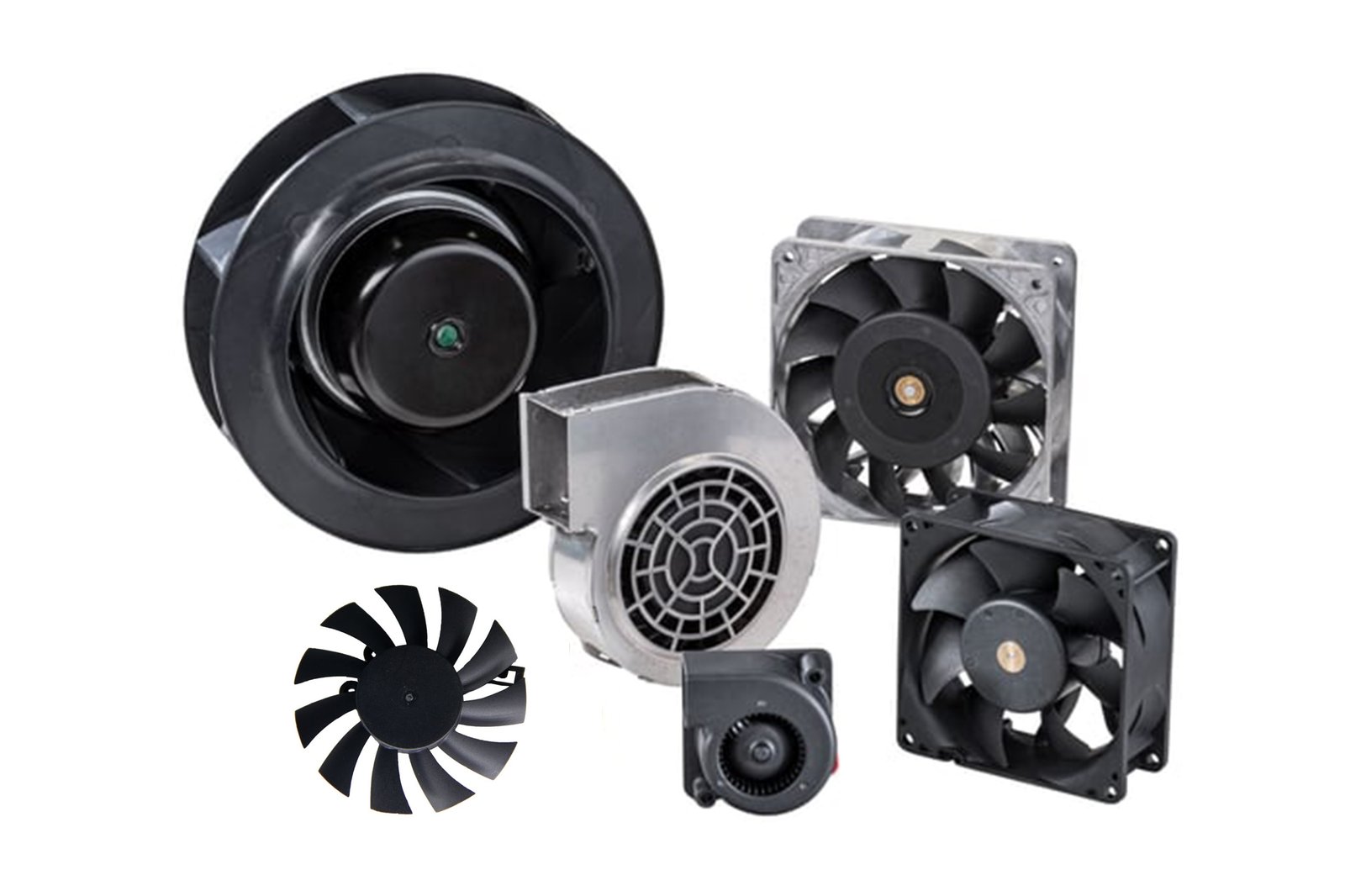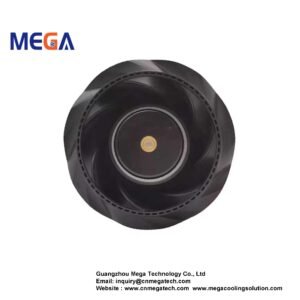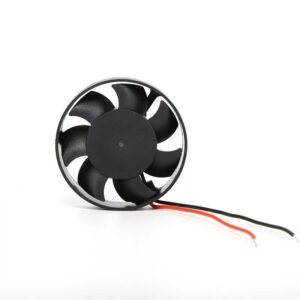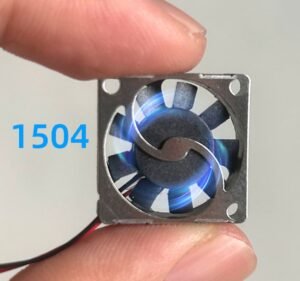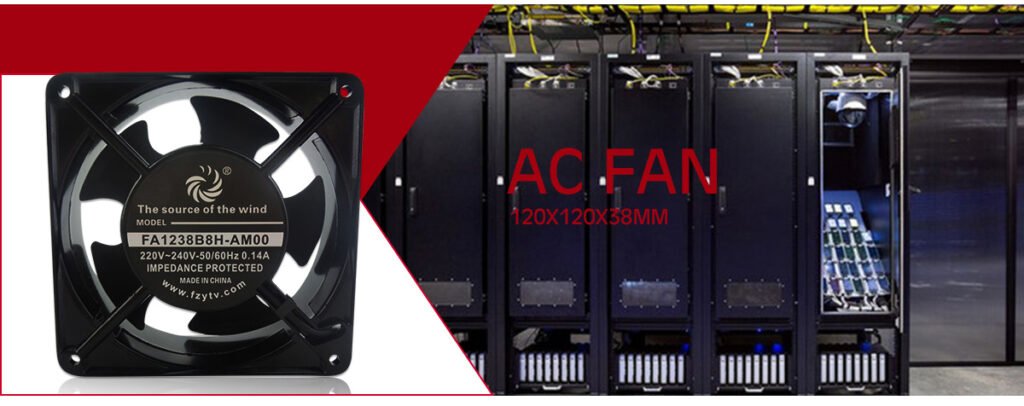Here’s introduction of ventilation fan systems and exhaust fan systems.
Ventilation fans
Ventilations fans are air blowers used in conjunction with ventilation equipment. They are essential to ventilation systems, as they are the component that moves the air through the ventilation systems. Typically, users install them to circulate air to avoid harmful gases and unpleasant smells from a work area. They can also heat and cool homes and offices.
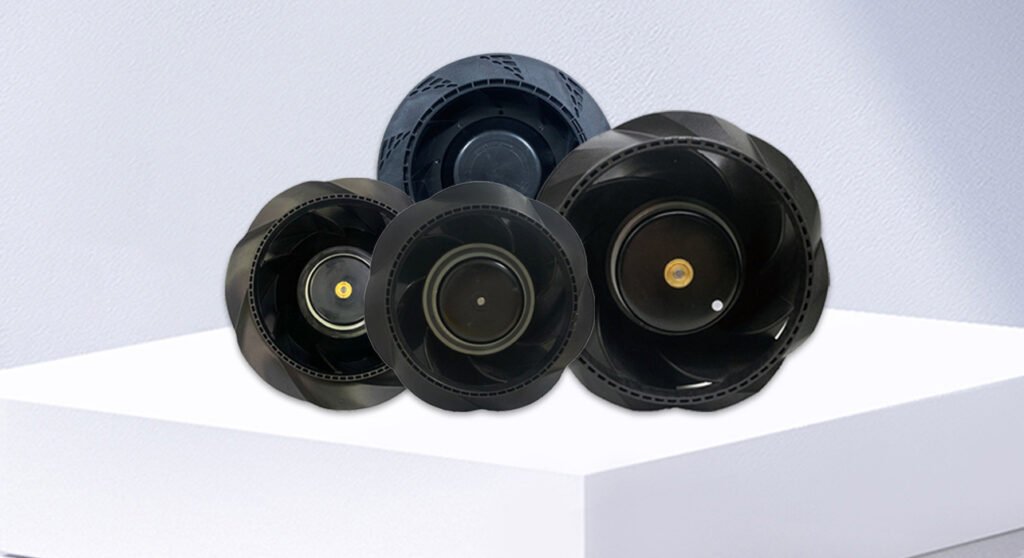
Exhaust fans
Exhaust fans are a type of ventilation fan. They remove gas from one area and send it towards another. Typically, they are found in ventilation system ductwork, where they are the final equipment the air encounters before the vent system sends it away.
Regardless of their function, there are two main types of industrial blowers. These are centrifugal blowers and axial blowers.
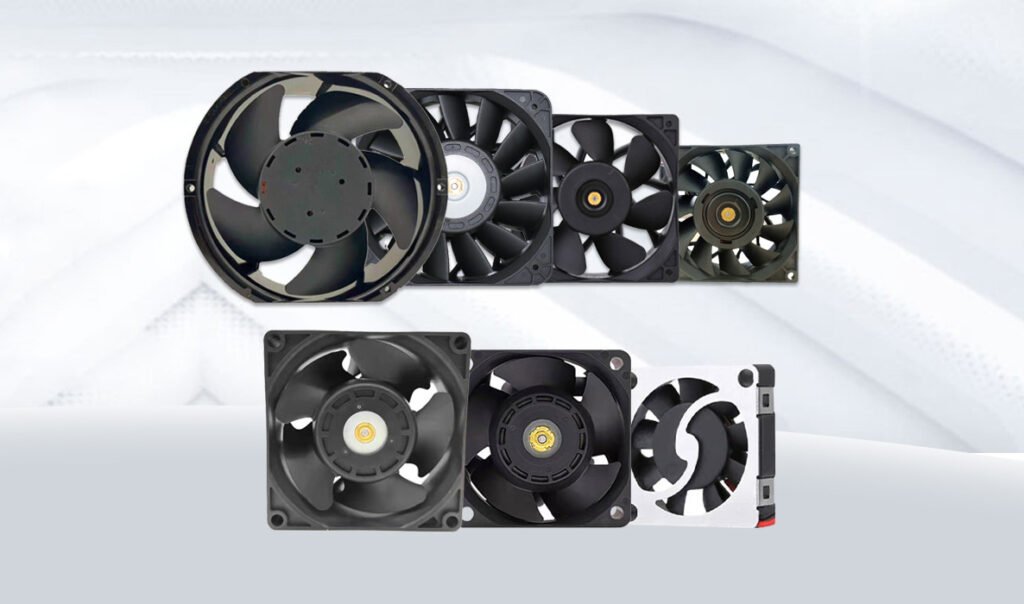
Centrifugal blowers or Radical fan
They are commonly used to create vacuums for use in lab environments and with surface cleaning applications. When a centrifugal blower is operating at the same RPM level as an axial blower, it is capable of producing a more highly pressurized airflow, thanks to the added efficiency of centrifugal motion. This is excellent for a high pressure, concentrated air flow application.
Centrifugal fans have air enter in one plane and exit in another. They have rotating impellers with blades that increase the speed of air streams and convert them into pressure. In addition, within a certain pressure range, maintaining the output of the system can be higher than the fresh air volume. So it is suitable for pipes, ventilation equipment and systems.
They are the ones that feature a circular impeller, which is enclosed in a cage. This design allows blower fans to create a concentrated airflow in high-pressure conditions. The fans pull air from the sides and release it at a 90° angle.
Centrifugal blowers have many subtypes with various applications. Subtypes include acid gas blowers, air foil, backward curve, backward inclined, forward curve, industrial exhausters, centrifugal floor dryers, mechanical vapor recovery blowers paddle wheel, pre-engineered (PE) fans, high pressure blowers, radial blade, radial tipped, specialty process gas blowers, and surgeless blowers.
Axial blowers
Axial blowers are very useful for widespread heating and cooling. They distribute air much more evenly than centrifugal blowers. They are inefficient for use with applications that feature sharp turns. The best example of such an application is complicated ductwork, which is much better served by radial blowers, which suck air into their enclosures from one side and spit it out the other. However, in some settings, like at a warehouse without central air conditioning in the summer, this concentrated air flow will provide only selective relief. Instead, what this setting requires is a large axial fan, which will distribute air much more evenly, providing more uniform relief.
The character of fans:
- Cooling fans or cooling tower fans: Efficiently regulate temperature in various applications.
- Axial flow fans: Offer high airflow with low pressure drop for ventilation needs.
- Portable blowers: Compact and versatile axial blowers for on-the-go cooling.
- High-temperature axial fans: Designed to withstand extreme heat environments.
- Mixed flow fans: Combining characteristics of axial and centrifugal fans.
- Tube axial (tubeaxial) fans: Ideal for applications requiring straight airflow.
- Vaneaxial fans: Combining axial flow and radial flow characteristics.
- Variable pitch axial fans: Adjustable blades for flexible airflow control.
- Variable pitch on-the-fly axial fans: Real-time adjustable blade angles for dynamic cooling.
Axial Fan
Axial Fan are best for compact electronics, automotive products, medical devices, and appliances as well as large applications such as cooling towers, vending machines, outdoor air conditioner compressors, and combustion engine cooling. So they are also ideal as general-purpose fans.Axial fans, they are AC (alternating current), DC (direct current), or EC (electronically commutated), find optimal applications in various industries due to their unique characteristics.
AC Axial Fans:
AC axial fans are best suited for large applications that require consistent and powerful airflow. These fans are commonly used in cooling towers, outdoor air conditioner condensers, and industrial ventilation systems. Their robust construction and ability to handle higher static pressures make them ideal for cooling large equipment and machinery.
DC Axial Fans:
DC axial fans are well-suited for compact electronics, automotive products, medical devices, and appliances. Due to their lower power consumption and quieter operation, DC fans are often used in electronic component cooling, where precise temperature control is essential. They are also popular in automotive applications, as they provide efficient cooling for combustion engine systems.
EC Axial Fans:
EC axial fans, or electronically commutated fans, combine the benefits of both AC and DC fans. They offer energy-efficient performance and precise speed control, making them ideal for a wide range of applications. EC fans are commonly used in medical devices, appliances, and ventilation systems where energy efficiency and reliable operation are crucial.
Regardless of the type, all axial fans have a simple construction with blades arranged in a propeller shape. Their ability to provide airflow with relatively low static pressure makes them cost-effective and efficient for applications where resistance against air movement is minimal.
In summary, AC axial fans are preferred for larger applications like cooling towers and air conditioners, DC axial fans excel in compact electronics and automotive products, while EC axial fans combine efficiency and precise control, making them versatile for various industries and applications.

Axial cooling Fan Features:
- -High pressure and medium flow
- -Tolerates dust, moisture and heat, making it suitable for industrial use
Some other factors need to consider how to choose cooling Fan
- Pressure
- Airflow rate
- Efficiency rate
- Space constraints
- Noise generation
- Drive configuration
- Operating temperature range
- Operating environment range
- Cost
- Delivery time
- Availability
For cooling fan user manual ,you can refer to this article
Need additional assistance selecting a cooling fan for your application? Contact us today to start your solution.
Mega Tech can customize your choice to meet even the most demanding restrictions. If you have any questions or wish to learn more about Axial fans, contact Mega team today.
Articles you may also like:
Why Mega Fan is the best alternative to EBM Papst fan

